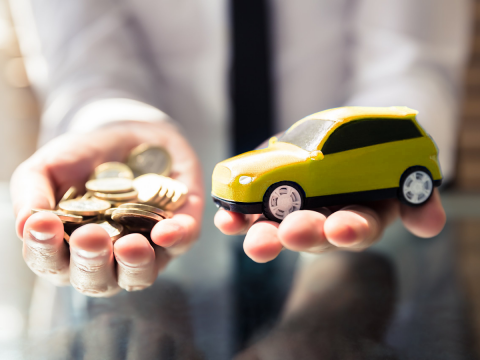to get insurance quotes in your area
Most and Least Expensive Vehicles to Insure

There are a myriad of factors when it comes to insuring your new vehicle. Driver's age and driving record will of course factor in to the equation as well as credit rating and whether or not the driver has had any moving violations. Before any of that the first defining factor is the make and model of the vehicle. This factor will serve as the baseline to your rate and everything else will add or subtract accordingly. This article will set out to explore the most and least expensive vehicles to insure on the market and other factors that will factor into your price. We will factor our statement based against the annual average nationally which stands at $2,862. We will also discuss elements that may factor into your final rate. This is based on data found online and each state may have different values and legal factor that may add or lessen this price. Independent research is always important when determining what is best for you and your family when it comes to the best insurance and value.
Most and least expensive vehicles to insure
Starting with the most expensive vehicle to insure on the market, the Mercedes AMG GT R model. The Mercedes stands at an annual average of $4,082. The first most obvious reason for this average is the high sticker price of the vehicle. The Mercedes AMG GT R is set at $162,000 to start. That is a vehicle with a 577 horsepower V-8 engine. In essence the consumer will pay more for a performance vehicle on the outset. In the top tier of insurance pricing is the Audi R8 5.2L V10 Quattro Performance at $4,033/annually, the Nissan GT-R at $3,994, and the BMW M8 Competition XDrive convertible at $3,953. These vehicles are considered the top of their classes and have the clout to demand a higher price.
Sports Cars sit at the high end of insurance premiums naturally because they are often foreign high-performance vehicles that require higher end repairs. The cost alone can be difficult for some insurance companies to cover. There is also the likelihood of theft sports cars are more likely to be stolen on average than any other kind of vehicle. Sedans typically hit at the higher end of insurance than large SUVs like Hummer and Range Rover. SUVs tend to be more reliable on the road but also tend to cause more damage to the vehicles they hit but the sedan is almost always more likely to get in an accident statistically. The higher the price tag of the vehicle the more expensive the insurance tends to be. However, between the Sedan and SUV the SUV is on the lower side of insurance premiums.
The cheapest car to insure is the Mazda CX-3 Sport at $1,324/annually. Also close in price to insure is the Honda CR-V LX at $1,333, Wrangler Sport S at $1,334, and the Subaru Outback 2.51 at $1,335. The prices are very close together but they represent the cheapest most reliable models on the market. Reliability refers to the longevity of the vehicle with routine maintenance. With more economical vehicles they tend to be built for a longer life than more upscale models where car buyers are expected to trade out every few years for the latest model. These vehicles last longer and will only go down in premium rates if you keep safe driving practices and keep up on scheduled maintenance such as tire rotation and oil changes. Cheapest to insure doesn't automatically mean safest to drive but these models generally have tested very well in safety features and ratings and factor strongly in the final price of insurance.
The cheapest type of vehicle to insure is the minivan at $2,590 annually. The compact car despite its fuel economy and size is above the national average insurance rate at $3,120/annually. The vehicle types are based on visibility, dependability, speed, and the size of te motor as well as the likelihood that the vehicle will be stolen. In that capacity the minivan is the cheapest type of car to insure. Insurance companies even break down rates between companies. This has a lot to do with safety and reliability. Some companies have a proven record of good safety inspections and impact tests. Honda overall was the cheapest company to buy from at $2,736/annually. The most expensive vehicle brand to insure was Jeep at $3,347/annually.
How do they come up with all these numbers?
It's tricky but as I mentioned they start with the make and model of the vehicle. The rate is dependent on the likelihood of a driver to get into an accident. This boils down to two factors the driver and the vehicle. There are some other factors of course but in general it is the easiest way to discern what your end rate will be. Not all insurance are created equal. Some have lower rates because they are direct buy companies such as Progressive. Others operate through agents and tend to be higher but have a more personalized feel to them. If it is a company you have worked with before and have a relationship with you may be able to get lower premiums through loyalty programs.
The driver is broken down into a series of statistics. Driving record, location, and credit score are starting points. A driver with tickets or a couple of accidents will naturally have a higher rate. However, on the other side new drivers will also have a higher rate because they lack experience and are more likely to make a mistake. This element will change over time and if the driver can keep a good record these rates will go down. Location refers to where the car will be driven and where it will be stored. If it's parked on the street it could get hit more easily than if it’s in a garage. Also, cities tend to have higher rates simply because there are more drivers on the road. Credit score is legal to set a rate on in every state but for those that do a person with poor credit can pay up to71% more for their insurance. The reasoning is that poor credit equals carelessness on the part of the driver and therefore a higher likelihood of getting into an accident. Gender and age are also factored into a higher premium. Young men get charged more than young women who are presumed to be more responsible. Some of these factors may seem arbitrary but insurance is directly relational to how likely they believe you are to get into an accident. The data bears up against their reasoning for charging rates based on these seemingly innocuous factors.
Insurance companies also take into account the vehicle. The age of the vehicle and mileage are factors on older vehicles but assuming you are purchasing a new vehicle the premium is based on a few factors. The first factor for the vehicle is the MSRP or the manufacturer suggested retail price. The higher the MSRP the higher the initial premium. Cost of repair is another factor. Exotic sports cars with rare parts are going ti be more expensive to repair. Whereas Honda tends to use universal parts and has a concise repair method to their vehicles. Claim rate is a big factor as well. The higher the claim rate the higher your initial insurance premium.
This was touched on previously but a third factor which can be overlooked is state, city, and neighborhood which all factor into the end price. Each state has its own rules governing auto insurance and while they tend to stay similar some require more for basic insurance than other which will raise your rate. Cities factor because of their large population and just statistically the more vehicles around the higher the likelihood of an accident. Keep an eye on the crime rate in your neighborhood because it will also factor into the final cost. High crime and low property taxes could lead to an increase in the cost of your premium.
Luckily most of the major companies mitigate some of this with extensive discounts for good driving and many others that are far too numerous to list in this article. Insurance companies are experts in risk management and can explain more directly state to state what discounts are available and how you can mitigate some of the above-mentioned factors.
In the end the make and model of your car serves as the baseline and the rest is built from that foundation. Drive safely and avoid distracted driving and your premiums will go down year after year. This article serves as a primer for what to expect when buying a new vehicle. Ultimately the decision will be what works best for you and your family and what you can afford. The sticker price alone is not the same as the final price and it is wise to think about insurance rates on the outset when considering purchasing a new vehicle.








Add new comment